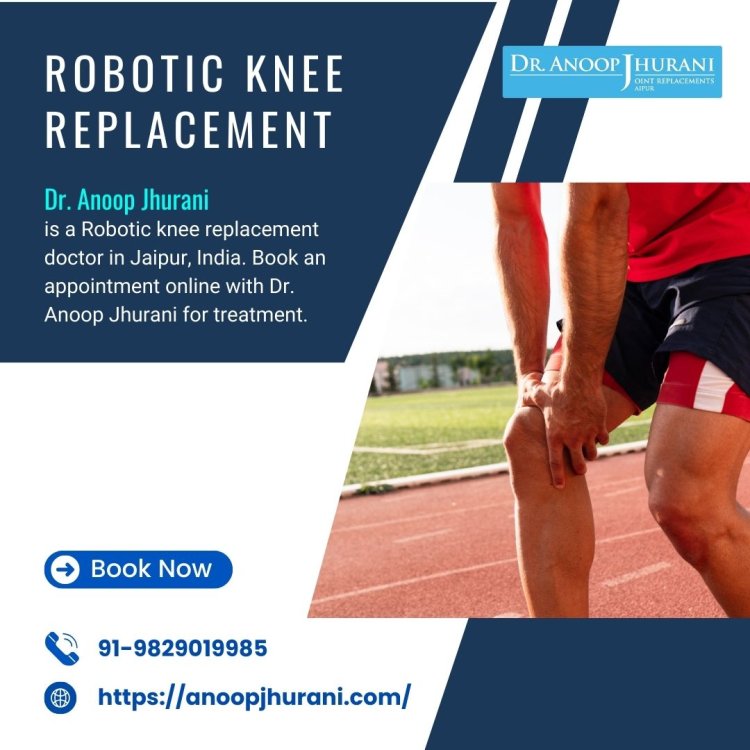Understanding Robotic Knee Replacement Surgery
Dr. Anoop Jhurani is a Robotic knee replacement doctor in Jaipur, India. Book an appointment online with Dr. Anoop Jhurani for treatment.
Share this Post to earn Money ( Upto ₹100 per 1000 Views )

Knee replacement surgery has evolved significantly over the years, and one of the most advanced techniques available today is robotic-assisted knee replacement. This innovative approach, led by experienced surgeons like Dr. Anoop Jhurani in Jaipur, India, offers enhanced precision, better outcomes, and a smoother recovery process. But how exactly is robotic knee replacement surgery performed, and what are the different types of knee replacement surgeries available?
How is Robotic Knee Replacement Surgery Performed?
Robotic knee replacement surgery begins with a detailed mapping of the patient's knee anatomy. This is accomplished using advanced computer software that generates a 3D model of the knee, providing the surgeon with accurate information about the joint's condition. During the procedure, the surgeon uses a robotics-assisted arm to remove damaged bone and tissue while preserving as much of the healthy bone and tissue as possible.
The robotic-assisted arm’s movements are guided by patient-specific data, ensuring that the boundaries for cutting and positioning are exact. This precision allows for the joint components to be balanced and positioned with an accuracy that is difficult to achieve with traditional surgical methods. Dr. Anoop Jhurani, a leading expert in robotic knee replacement surgery, uses this cutting-edge technology to perform minimally invasive procedures, resulting in less pain, quicker recovery, and improved patient outcomes.
Why Choose Robotic Knee Replacement?
Robotic knee replacement surgery offers numerous benefits over traditional methods. These include:
· Precision: The use of advanced computer software and robotics allows for precise alignment and placement of the joint components, reducing the risk of complications and improving the longevity of the implant.
· Less Pain: The minimally invasive nature of the surgery results in less trauma to the surrounding tissues, leading to reduced post-operative pain.
· Faster Recovery: Patients typically experience a quicker return to normal activities due to the accuracy and reduced invasiveness of the procedure.
· Improved Outcomes: The precise alignment achieved through robotic assistance often leads to better overall knee function and a more natural feeling in the joint.
Conclusion
Robotic knee replacement surgery represents the future of joint replacement, offering patients a safer, more effective option for treating severe knee pain and arthritis. Whether you require a total knee replacement, partial knee replacement, or revision surgery, the use of robotics can significantly enhance the success of your procedure. In Jaipur, Dr. Anoop Jhurani stands out as a leader in this field, providing patients with top-notch care and the best possible outcomes.
If you're considering knee replacement surgery, it's essential to understand your options and choose a surgeon experienced in the latest techniques. With robotic knee replacement, you can look forward to a pain-free future with improved mobility and quality of life.














